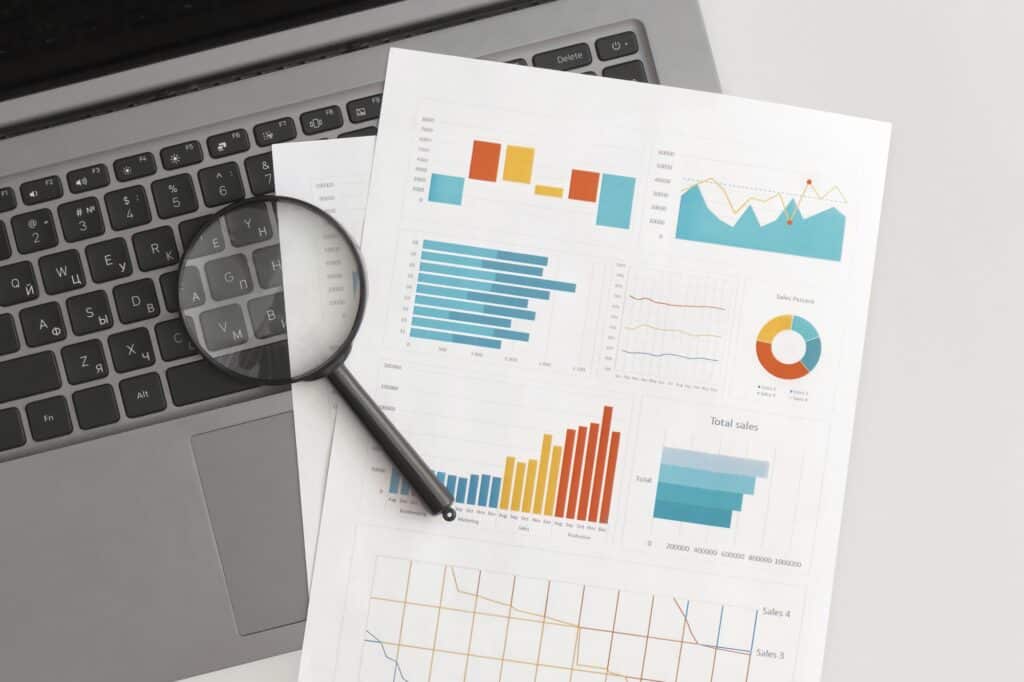Analytics reporting is the process of collecting, analyzing, and presenting data to gain insights into website traffic, user behavior, marketing campaign performance, and other aspects of your online presence. It involves transforming raw data into actionable information that can be used to make data-driven decisions.
Here’s a breakdown of the key steps in analytics reporting:
1. Data Collection:
- The first step involves gathering data from various sources, such as website analytics tools (e.g., Google Analytics), social media platforms, marketing automation tools, and CRM systems.
- Common data points collected include website traffic, user demographics, page views, bounce rates, conversion rates, and engagement metrics.
2. Data Analysis:
- Once collected, the data needs to be analyzed to identify patterns, trends, and relationships.
- Data analysts use various tools and techniques, including data visualization tools, pivot tables, and statistical analysis methods, to uncover meaningful insights.
3. Report Creation:
- The analyzed data is then presented in a clear and concise format, typically in reports.
- Reports can be visual (charts, graphs), textual (tables, summaries), or a combination of both.
- Effective reports highlight key findings, trends, and actionable insights for stakeholders.
4. Reporting and Communication:
- Analytics reports are then distributed to relevant stakeholders, such as marketing teams, executives, and business owners.
- The communication process involves explaining the findings, their implications, and recommended actions based on the data insights.
Benefits of Analytics Reporting:
- Data-Driven Decision Making: Analytics reports provide valuable insights that can guide strategic decision-making across various aspects of your business.
- Improved Marketing ROI: By tracking campaign performance, you can optimize your marketing strategies for better return on investment.
- Enhanced User Experience: Understanding user behavior helps optimize your website and content to improve user experience and engagement.
- Identify Opportunities: Analytics can reveal opportunities for growth, such as untapped markets or underperforming areas that can be improved.
- Measure Success: Analytics reports help you track progress towards your goals and measure the success of your online initiatives.
Please click to see website design examples.

Common Analytics Reporting Tools:
- Google Analytics: A free and popular platform that provides comprehensive website traffic and user behavior data.
- Adobe Analytics: A paid enterprise-level platform offering advanced analytics capabilities.
- Social Media Analytics Tools: Built-in analytics dashboards offered by social media platforms like Facebook Insights and Twitter Analytics.
- Marketing Automation Platforms: These platforms often include analytics features to track marketing campaign performance.
Getting Started with Analytics Reporting:
- Define Your Goals: Identify what you want to achieve with your analytics efforts. This helps determine the data you need to collect and analyze.
- Choose the Right Tools: Select analytics tools that align with your needs and budget.
- Collect and Analyze Data: Start gathering data and use tools and techniques to analyze it effectively.
- Create Clear Reports: Present your findings in clear and concise reports with actionable recommendations.
- Communicate Insights: Effectively communicate your analytics insights to relevant stakeholders.
By implementing a data-driven approach through analytics reporting, you can gain valuable insights into your online presence, optimize your strategies, and achieve your business goals.
To read New trends in website design in 2024 Click on the link.








